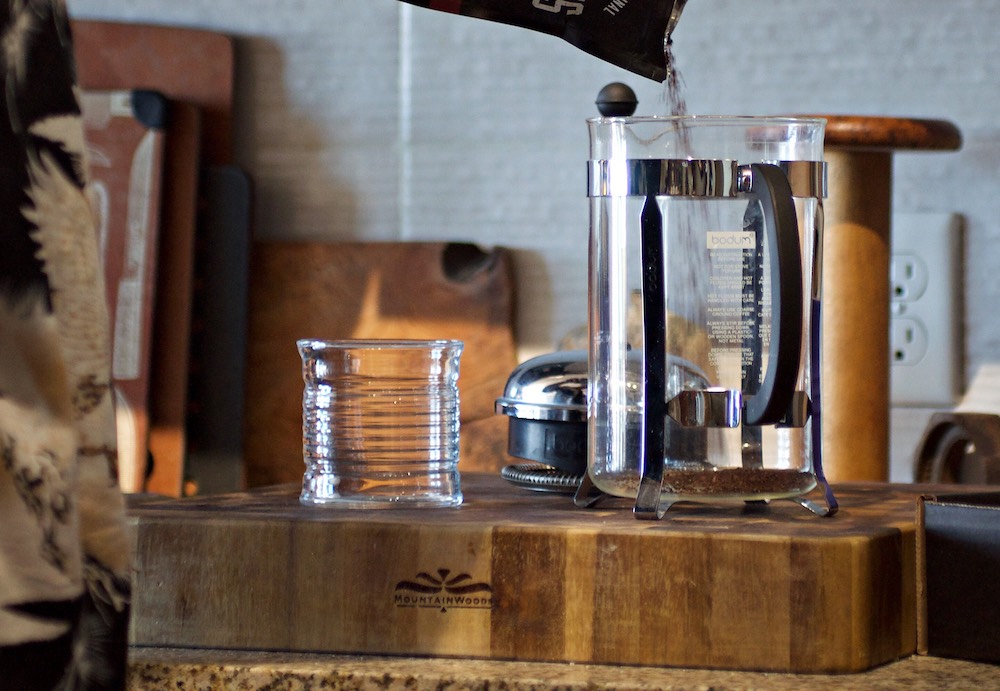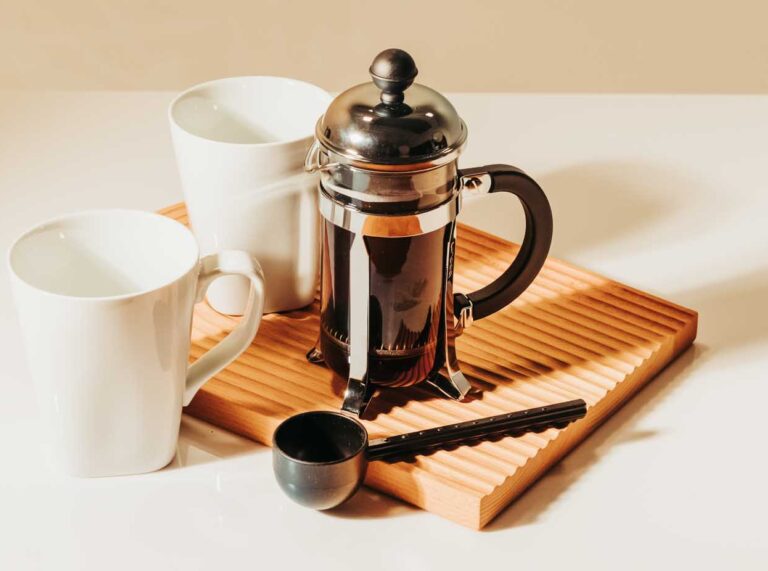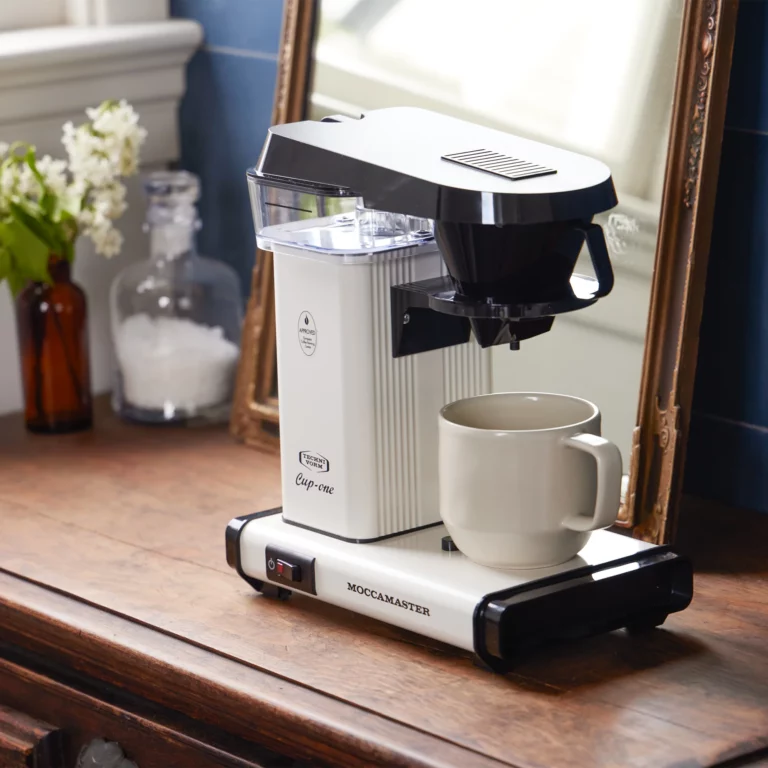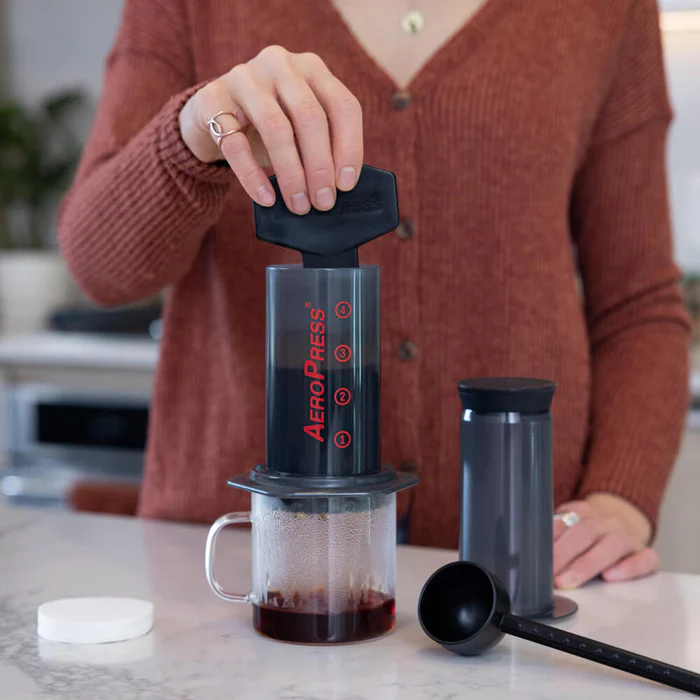The right coffee brew methods involve both science and art. At Cooper’s Cask Coffee, we pay equal attention to both aspects. Science sets you up for a successful brew, and art is your personal preference of brewing method results.
You can always contact us with any questions about our coffee, about brewing, or about our cool gear selection for making the best cup of joe you’ve ever had. We also invite you to use our free online coffee finder, which helps you narrow down choices to the ones most likely to make you happy.
Let’s explore the top coffee brew methods that can make your next favorite cup.
The earliest coffee brew method.
Let’s start with history before mystery. According to legend, the first coffee was roasted and brewed in Ethiopia by a goatherd named Kaldi (or Khalid. Maybe Steve. C’mon, it’s a legend after all!) in 850 CE.
Kaldi saw his goats eating reddish berries from a bush. Shortly thereafter, those goats became so energized that they couldn’t sleep that night. He reported the experience to a local monastery, who wasted no time making a drink with those berries. It helped them stay awake and alert during their extended hours of evening prayer. Though their drink wasn’t technically coffee as we know, it was the start of a millennia-long love affair.
Fast-forward 350 or so years. People began to remove the coffee beans from the fruit and hull, and then roast them on thin, perforated pans over an open fire. The now toasted/charred beans were dropped into boiling water and allowed to cook for a bit, pulling out plenty of flavor and caffeine. Shazam, you’ve got coffee that even a trucker could love.
Around the mid-15th century, roasting and brewing methods in modern-day Yemen appeared that are the basis for today’s coffee.
Preparation for Brewing
No matter which brewing method you use, there are some basics to prepare so that you can brew the best cup of coffee. Some are coffee-nerd, flavor-purist level requirements, but they truly make the difference between a good cup of coffee and a great cup of coffee.
Water Is the Building Block
Your cup of caffeinated or decaf joy is 98 to 99 percent water. The taste of the water itself obviously affects the flavor, but the pH level of the water also determines extraction quality—and therefore flavor profile.
Use pH Balanced Water
Water extracts the soluble flavor compounds from your coffee grounds. If your water is pH balanced at 7, you’ll get the best extraction. Alkaline water—aka, “hard water”— falls under 7, and acidic water—”soft water”—goes above 7.
The pH balance affects your brew in these ways:
- Hard Water extracts more “bitter” compounds, making the coffee taste bitter.
- Soft Water under-extracts flavor and caffeine for a bland but sour cup.
Water Quality
You’re going to want to use filtered water to get the best flavor. Make sure the filter is a charcoal filter. Water softeners may filter water, but as noted above, the “soft” nature of the water will under-extract flavor.
When you start heating the water, only use cool water. Even if your tap water is great quality, don’t use the “hot” water from your tank water heater. That water has sat in the tank for hours, and maybe even days. Mature tanks make the water harder, and can add metallic flavors from where the tank lining could be failing.
Tankless water heaters may be ok, as they instantly heat water instead of heating a tank and holding it at that temperature. However, your safest bet is starting with cool water.
Use Fresh Coffee
We can’t stress this enough—but we’re going to try. Fresh coffee means better coffee. And our coffee means great coffee…but we may be a little biased.
From single origin coffees like Ethiopia Bold Light Roast to Colombian Dark Roast, and barrel aged coffees like Bourbon Barrel Aged and Pinot Noir Aged, we send out our small-batch roasts within 3 days of their roasting. Our master roasters even write the roast date on the bags, so you know exactly how fresh your amazing coffee is.
Coffee that’s old can have a dusty or mildewy smell, and brews flat, dull, and possible sour coffee.
Filter Type Affects Flavor
Most non-percolating coffee brew methods involve a filter of some sort.
Screen Filter
If you want all the flavor possible from your coffee, use a screen filter. The mesh screen allows the oils extracted from the coffee, along with the rest of the flavors, to enter your cup. Your brewed coffee will have an enhanced mouth-feel too.
Paper Filter
Paper filters create a more smooth cup, as the paper retains the oils that add a strength to the flavor profile. White paper filters and unbleached paper filters deliver the same results.
Try Not to Use a Warming Plate
Continuously heating your coffee on a coffee maker’s warming plate can overcook the brew, making it bitter and burnt-tasting. Think about investing in a good quality thermal carafe that can hold the temperature level for quite a while.
Related topic: how to brew whiskey coffee.
Coffee Brew Methods & How They Work
The coffee world offers a variety of brewing methods. You’ll find several ways on our Gear page that make amazing coffee every time.
Finding the right coffee brew method involves your preferences:
- The taste of the coffee (extraction)
- Complexity of process (lifestyle)
- Investment in equipment (budget)
Let’s go over the brewing methods, equipment, and results.
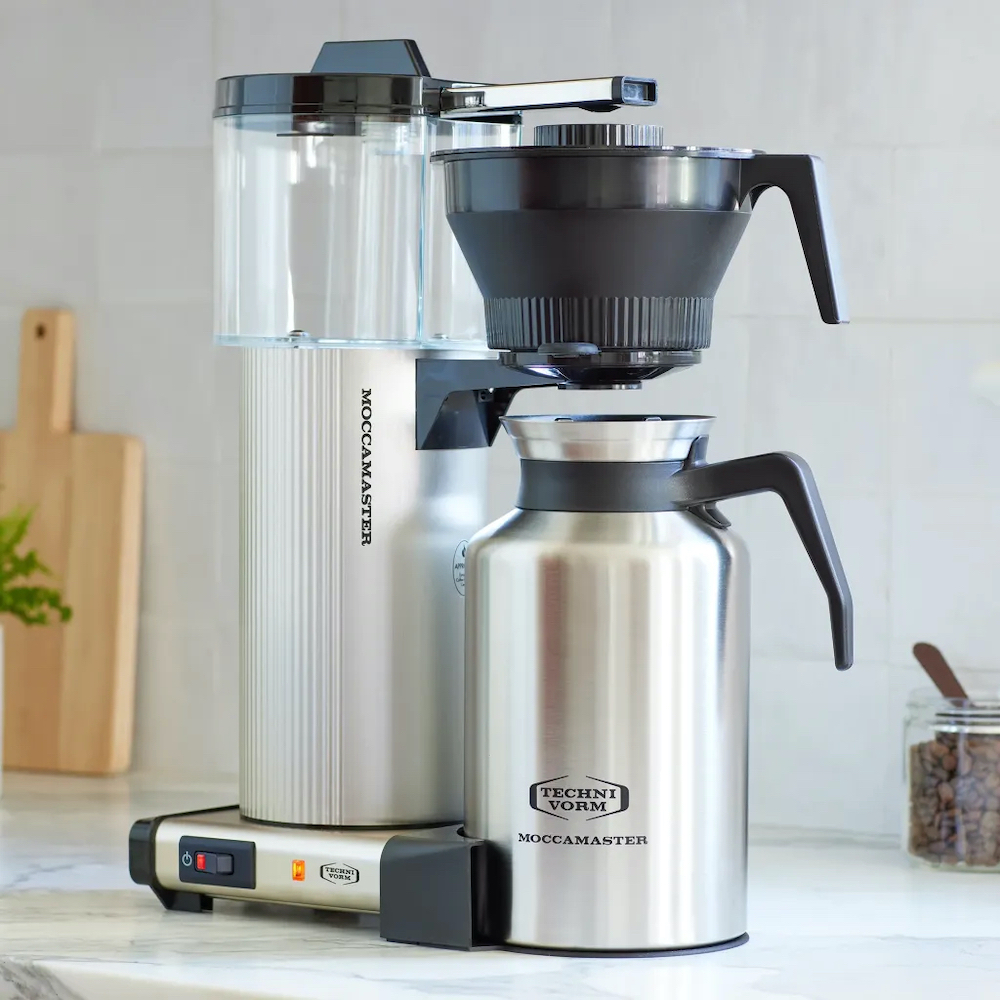
Auto-Drip Coffee Maker
This brewing method is the most popular across the US, and the simplest. The equipment is self-contained, including:
- A water reservoir
- Water-heating coil
- Drip head
- Filter basket
- Coffee pot/carafe
- Frequently—a warming plate
How It Works: Auto-Drip Coffee Maker
The auto-drip coffee maker feeds water from the reservoir into a tube (water-heating coil) that heats the water and sends it up the drip head. The drip head distributes the hot water over the coffee grounds in the filter basket, and brewed coffee drips down into the coffee pot. If the coffee maker has a warming plate, that continuously heats the coffee either for a preset amount of time, or until the machine is turned off (in cheaper models).
For an example of a higher-end automatic coffee maker, check out the Moccamaster CDT Grand. It makes up to 60 ounces of amazing coffee, putting the brew into an insulated carafe instead of a glass coffee pot. It will stay hot for a long time, without the over-brewing possible with a warming plate. Great for the office, and great for home too!
Recommended Grind for Auto-Drip Coffee Makers
A medium grind is best for an auto-drip coffee maker. The amount of time the water spends extracting the flavors is more suited to the surface contact afforded by this size grind.
For a grinder, we always recommend burr grinders, no matter the brew method. High quality burr grinders give you a more uniform grind, with grind sizes that can be set for your brewing method. A great entry-level high quality grinder is our Baratza Encore conical burr grinder. It offers 40 grind settings, and nicely fits under most kitchen cabinets.
Pros: Auto-Drip Coffee Maker
- Easy to use
- Inexpensive
- Can choose filter type (screen or paper)
Cons: Auto-Drip Coffee Maker
- No heat control of water
- Warmer plate over-cooks coffee
- Doesn’t allow the true craft of coffee making
Coffee Suggestion: Auto-Drip Coffee Maker
Because auto-drip coffee makers have a single, “middle-of-the-road” brew result, you’re fairly flexible in your coffee choices. Some of our suggested coffees include:
- Rye Whiskey Barrel Aged Coffee delivers an intoxicating medium roast with a mix of complex flavors including whiskey and rich oak from the barrels.
- Colombian Dark Roast Coffee delivers a unique and celebrated, yet mild flavor that includes hints of rustic sweetness, cocoa, and dark fruit notes.
Percolator Coffee Maker
The percolator coffee brewing method has been around since the early 1800’s. Though most modern versions use an electric heating element at the base, they all consist of:
- The water container (the body of the percolator, which also holds the brewed coffee)
- A basket stem/pump tube (metal tube with a disc-like perforated base)
- Coffee basket with spreader cover (a perforated cap)
- Percolator lid
- Heat source (frequently a built-in electric heater)
Some designs may add parts, but this is a fairly universal set-up.
How It Works: Percolator Coffee Maker
The coffee brew method of a percolator coffee maker heats water within the percolator itself. Think of it like a large teapot, all self-contained. The hot water travels up the pump tube and, at the top, it sploots onto the percolator lid. If the percolator has a glass knob on top, you’ll see the liquid splash against it.
The hot water lands on the spreader cover, and drips through the holes in the cover onto the grinds in the coffee basket. In turn, the coffee basket’s perforations allow the liquid to drip back into the body of the percolator.
As more brewed coffee drips from the basket, the liquid traveling up the pump tube grows darker.
Recommended Grind for a Percolator Coffee Maker
You should use a coarse grind for a percolator. The holes in the coffee basket will let fines and more finely ground coffee through, so the coarser the better.
Percolator Coffee Maker Pros
- A self-contained, all-in-one setup
- Parts can be removed for easier cleaning
- Very robust coffee experience
Percolator Coffee Maker Cons
- Easy to over-brew/burn if not monitored
- More grit from grounds in the coffee
- Can bubble out and spill from top if on too long
Recommended Coffee for a Percolator Coffee Maker
A percolator coffee maker retains all the oils and flavors of your coffee. It also emboldens those flavors by cycling the brewed coffee back up through the pump tube and over the grounds again and again.
To moderate this boldness, you might consider a coarse grind of a lighter roast. If this is your first attempt using a percolator, we recommend trying a lighter roast in the beginning, such as:
- Ethiopia Bold Light Roast, which delivers a subtle citrus taste with raw floral honey and wild berry undertones
- Tanzania Peaberry Medium Light Roast, which delivers a bright, acidic coffee with notes of orange, raspberry, and wine.
Pour Over Coffee Maker
A pour over coffee maker basically functions as a manually-operated drip coffee maker. The parts include:
- Dripper
- Carafe (coffee pot)
- Lid for the carafe/coffee pot.
You will also need filters for the dripper because the filter holds the coffee grounds and some form of heating unit to heat the water to the right temperature.
For heating, we recommend our Stagg EKG Pro heating kettle. This is not your grandma’s teapot. The EKG Pro allows you to set the water to a specific temperature (195 degrees to 205 degrees fahrenheit is your target) and keep that water at that exact temperature for up to 60 minutes.
Oh—it also connects to your WiFi for firmware updates. #PrettySweetSetUp
How a Pour Over Coffee Maker Works
First, start the water heating in your kettle. Then, put the filter (paper or screen) into the dripper. Most drippers are conical in shape, wider at the top and narrower at the bottom.
Put the dripper onto the top of your carafe or coffee pot, and when the water is at the right temperature, you slowly pour the water across the top of the grounds. The majority of coffee purists do it starting at the center and then moving in a steady spiral to the outer edge—and then back again to center.
Letting Your Coffee Bloom
One of the techniques used to get the most flavor out of your pour over coffee, is to give the grounds time to “bloom.” This means pouring a small amount of your hot water over the grounds, and then letting it soak for about 30 seconds. The grounds swell and rise; you may see it bubble a little. Now it’s ready for the rest of the water, poured as per the directions above.
Recommended Grind for a Pour Over Coffee Maker
The best grind for a pour over coffee maker like our Hario V60 Pour Over Kit, is a medium-coarse coffee grind. That’s close to what a French press uses, but a little less chunky.
Pour Over Coffee Maker Pros
- Control of taste, temperature, and strength
- Relaxing, personal process
- Inexpensive to own
Pour Over Coffee Maker Cons
- Takes time to do by hand
- Extraction may not be uniform
- Require additional equipment to heat water
Coffee Suggestion for a Pour Over Coffee Maker
Because the pour over coffee brew method creates such a great cup of coffee, almost any of our coffees will make a great cup. You might be adventurous and try several different coffees.
- Barrel Aged Box Set. Enjoy 4 different barrel aged coffees: Rye Whiskey Barrel Aged, Rum Barrel Aged, Malt Whiskey Barrel Aged, and Bourbon Barrel aged.
- Single Origin Coffee Boxed Set. A sampling of 4 of our single origin coffees from Sumatra, Kenya, Ethiopia, and Rwanda, each specifically roasted to bring out their best flavor profiles.
Espresso Coffee Maker
Espresso coffee makers come in manual versions, automatic versions, and basic stovetop versions (a moka pot). You’ll have to decide how involved you want to be in the process to choose which one is right for you.
The parts that make up the machines can be very complex in the automatic machines, to percolator-style simple in the moka pots.
How an Espresso Coffee Maker Works
Their configurations widely vary; to explain how it works is to simplify it to the extreme basics.
With any espresso maker, including Italian style espresso (moka pot), a chamber exists that is filled with the coffee grounds. This chamber is sealed off, with an inlet for the hot water to enter, and an exit for the espresso to come out either into a tiny pot, or a cup.
As a huge difference from other coffee brewing methods, there is no dripping/drizzling of water onto the grounds, and the brewed coffee doesn’t cycle as with percolators. It’s a one-and-done process.
Espresso machines/coffee makers use hot water, steam, and pressure to force liquid through the grounds chamber. Moka pots only build up 1.5 bars of pressure. Espresso machines, both automatic and manual, can build up to 9 bars of pressure.
Bars are equal to about 14.5 PSI, so think of the moka pot building up almost 22 pounds of pressure per square inch, and an espresso machine creating 130.5 pounds of pressure. For reference, the massive tires on those big semi trucks you see on the road have between 95 to 115 PSI. Espresso machines build up a lot of pressure.
This pressure, when released, forces the boiling water through the grounds, making that thick, rich, almost oily espresso experience in your cup. This is called “pulling a shot.”
Recommended Grind for an Espresso Coffee Maker
Depending on the espresso coffee maker you choose, you’ll want medium-fine (moka pot), or finely ground coffee. The brewing time is relatively short for making espresso, so you want a finer grind to provide the hot water maximum surface area for extraction.
Espresso Coffee Maker Pros
- Amazingly rich flavor
- Can make it quickly
- Saves money over time if you buy it frequently from coffee shops
Espresso Coffee Maker Cons
- The machine can seem expensive
- Automatic/manual machines can be complex
- The steam and water involve higher temperatures
Recommended Coffee for an Espresso Coffee Maker
For your espresso adventure, Cooper’s Cask Coffee recommends:
- Brazil Medium Dark Roast Espresso. Delivers rich notes of creamy brown sugar, black cherry, and sweet orange.
- Espresso Coffee Box Set. A sampling of single origin coffees from Kenya, Ethiopia, and Brazil for multiple flavor experiences.
French Press Coffee Maker
A French press coffee maker is a surprisingly simple (especially for the French!), fully manual coffee brewing method.
The parts include:
- A beaker/carafe in a frame with a handle
- A plunger rod connected to a round plate with a filter screen
- A lid through which the plunger rod slides vertically
You will also need extra equipment to heat the water. French press coffee makers come in several sizes, from practically single-serve to household-sized beakers.
How a French Press Coffee Maker Works
You pour your grounds into the beaker, add the specified amount of hot water over the top, and stir them. Let it steep for 2 to 3 minutes, or up to 5 minutes for stronger coffee. Steeping longer than 5 minutes can make the coffee bitter.
When steeping is done, you set the lid on top of the beaker/carafe with the plunger pulled all the way up, and then slowly push the plunger down. The brewed coffee is forced up through the screen and through the grounds. Eventually the grounds are forced down to the bottom, and the beaker/carafe is ready to serve.
Recommended Grind for a French Press Coffee Maker
A coarse grind works best for your French press coffee maker. Because the coffee spends a long time in contact with the hot water, having less surface area allows the extraction to work slower. Also, finer grounds can clog the filter on the plunger and make it hard to finish the full press.
French Press Coffee Maker Pros
- Overall inexpensive to purchase
- Easy to brew and master
- Control of coffee strength
French Press Coffee Maker Cons
- Coffee sludge at bottom of maker
- Can over-extract if not timed right
- Cools quickly in the beaker
Recommended Coffee for a French Press Coffee Maker
As a versatile coffee brewing method, you can whichever of your favorite Cooper’s Cask Coffee choices. You can contact us for recommendations, or try one of the following:
- Cabernet Barrel Aged Coffee delivers sweet flavor and complex notes of dark fruit and chocolate.
- Rwanda Medium Roast Coffee delivers a diverse flavor profile with a sweet taste and silky body.
AeroPress Coffee Maker
An AeroPress coffee maker is somewhat of a “handyman” version of a French press, but without the breakable glass and with fewer sizes. That makes it more portable, and kind of adorable.
An Aeropress coffee maker kit, like what Cooper’s Cask Coffee sells, consists of:
- A plunger
- A water chamber
- A filter cap
- Paper filters
- A scoop
- A stirrer
If you want a truly travel-worthy Aeropress, enjoy this delicious brew anywhere with the Aeropress Go Travel Coffee Maker. Either Aeropress is affordable and transportable.
How An Aeropress Coffee Maker Works:
Put your fresh filter into the perforated filter cap, and attach that to the bottom of the water chamber. Next, you put the amount of grounds you want into the chamber, then fill it with heated water. Place the plunger in the top, a cup or small carafe at the bottom, and push the plunger down.
The brewing process can take under a minute and still makes an amazing cup of coffee.
Recommended Grind for Aeropress Coffee Makers
You should use a super-fine grind setting for your Aeropress. The extraction process is extremely short, so the maximum amount of surface area is needed to achieve maximum flavor. The super-fine grind also helps promote flavor to prevent the filter from absorbing the natural oils.
Aeropress Coffee Maker Pros
- Super-portable (even the “home” version)
- Fast brewing (under 1 minute)
- Versatile (makes coffee, cold brew, or espresso style)
Aeropress Coffee Maker Cons
- Needs extra equipment to heat the water
- Maxes out at 2 cups
- Not recommended for light roasts
Recommended Coffee for an Aeropress Coffee Maker
Because an Aeropress brews coffee quickly, medium or medium-dark roasts work best. We recommend trying these coffees:
- Kenya AA Medium Dark Roast delivers tastes of baked peaches with a heavy syrupy body.
- Malt Whiskey Barrel Aged Coffee delivers fresh, rich flavor with overtones of malt whiskey and oak barrel wood.
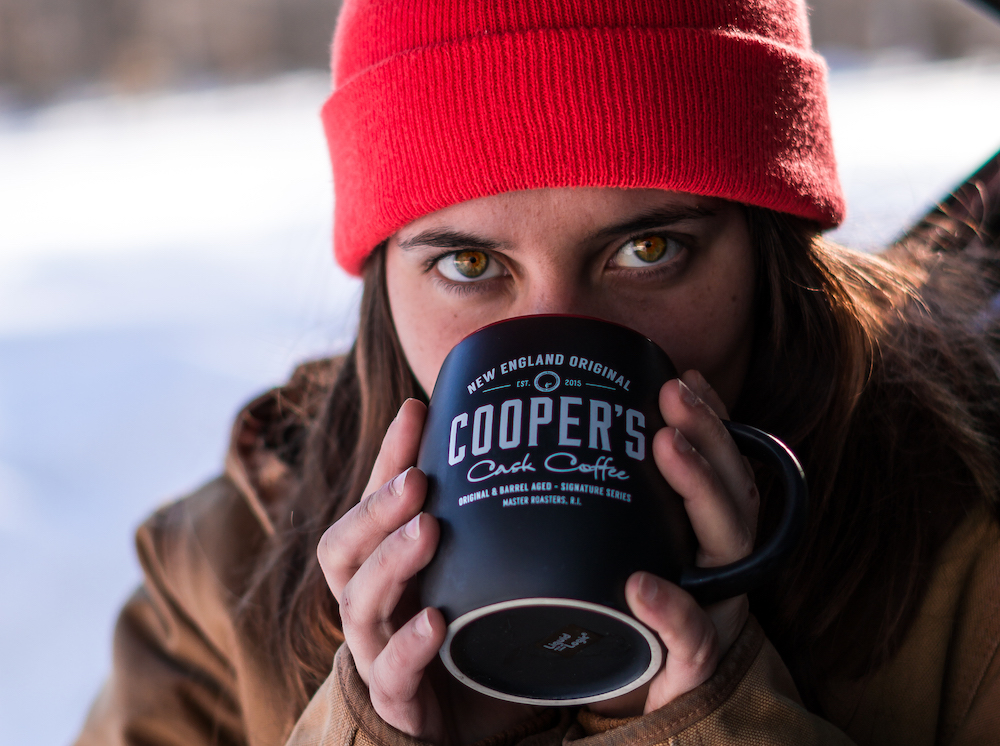
Cowboy Coffee
This coffee brewing method is coffee making at its simplest. You use a single-chamber coffee pot that can work on an open fire or on a stove top. If you’re hardcore, you can also use a cooking pot for brewing. Yeah, it can be that simple.
How Cowboy Coffee Brewing Works
Heat up water in your coffee pot until it’s boiling. Take it off the heat source, let it rest for about 1 minute, Add about 2 tablespoons of grounds per 8 ounces of water, and drop those grounds into your water. Let the coffee steep for about 2 minutes, then stir the coffee to make sure any floating grounds are fully immersed. Let it sit for another 2 minutes.
At the end of that second 2 minutes, pour about a half-cup of cool water around the edge of the inside of the kettle. This helps the grounds settle to the bottom. Now it’s ready to serve! Keep in mind the longer it sits in the coffee pot, the longer the grounds steep.
You can adjust the strength of your coffee in two ways:
- Let it sit longer before adding the cold water.
- After you add the grounds, return the coffee pot to the heat source and let it boil for 2 to 3 minutes, then remove from the heat source and do the two 2-minute steeping rounds before adding the cold water.
Recommended Grind for Cowboy Coffee
If you’re going to tippy-ky-your-coffee-ay, you should use a coarse grind. Any finer than that and you’ll get a gritty(er) cup of coffee, as the finer grounds will more easily remain suspended in the brewed coffee.
Pros:
- Inexpensive to do
- Super-easy process
- Rich flavor (that makes you feel like a cowboy)
Cons:
- Can easily over-brew
- You’re going to have grounds in your cup at some point
- No variety of brewing—it is what it is
Recommended Coffee for Cowboy Coffee
Are you kidding? We recommend any of our roasts from medium-dark to light. And of course we recommend:
Bourbon Barrel Aged Coffee delivers a rich Colombia single origin coffee flavor with sweetness, dark fruit notes, a hint of cocoa—and a finish that evokes the smooth, all-American flavor of bourbon.
Related topic: how to make your own naturally flavored coffee.
Turkish Coffee Maker
Although you can find many different machines and coffee brewing methods to make Turkish coffee, our favorite is the traditional method: the “cezve.” This is a very small pot with a long handle and a small pouring lip at the top. It dates from the 1500’s and the Ottoman Empire.
The cezve was traditionally made out of brass or copper, though more elite users can employ silver or gold. Modern cezves are often made from aluminum or steel.
How a Turkish Coffee Maker Works
The ingredients and the brewing process make Turkish Coffee stand out as a coffee experience. Recipes and methods vary greatly, so take this as just one version to try. Here’s the basic recipe:
- Add about 6 ounces of cool water to the cezve, which is considered 2 servings. Next, add sugar to taste and stir it in until dissolved. Some recipes don’t add any sugar, but most do—and you might want this buffer for the bold taste if you’re unaccustomed to the experience.
- Add at least 2 heaping tablespoons of ground coffee. This will make it quite richly flavored; however if you want it to have more of an espresso punch, add another 1/2 tablespoon. Don’t overdo it.
- Put the cezve on the heat source at medium heat, and let it heat toward boiling. As the contents warm, a dark foam will form. When the coffee is about to boil, take it from the heat and spoon off some of the foam into two coffee cups.
- Return the cezve to the heat source and boil the remaining coffee for about 15 seconds. Finish filling the two cups with the twice-boiled remainder.
You can serve it with sweets on the side (chocolate, biscotti, and of course—Turkish delight), and cream or milk. Traditional drinkers don’t add anything else to their Turkish coffee, but you do you. Many drinkers also add cardamom in the brewing process for an even more unique flavor profile.
Recommended Grind for Turkish Coffee
Turkish coffee requires a super-fine grind, like what the AeroPress uses. The difference is that Turkish coffee doesn’t use a filter, so you should expect grinds to make it into the bottom of your cup.
Turkish Coffee Pros
- Cool connection with centuries-old tradition
- Rich, sweet flavor
- Fairly simple process
Turkish Coffee Cons
- Can boil over quickly if not watched
- You will have grounds in your cup
- It has a lot of caffeine
Recommended Coffee for Brewing Turkish coffee
We recommend starting out by using our non-barrel aged single origin coffees, so that the rich flavors of the coffee itself can be the main characteristic of your experience. And for tradition’s sake, we recommend using coffee from Africa, including our Rwanda, Ethiopia, or Kenya beans.
Cold Brew Coffee Maker
A cold brew coffee maker consists of:
- Water container/pot that fits in the refrigerator
- A lid for the container
- Some kind of mesh filter or basket for the grounds
If you want to see a cool cold brew kit that makes great coffee for one (or two, if you actually want to share), check out our MIzudashi Coffee Maker. Its beautiful simplicity makes an excellent cold brew.
How It Works:
If cowboy coffee is the easiest way to make hot-brew coffee, cold-brew is the easiest way to make coffee, period.
You can use a coffee maker specifically designed for cold brewing. You can also use a mason jar with a lid. We do recommend having a screen filter handy for the jar-version, so you can pour the final brewed coffee through it. But even that isn’t absolutely necessary.
First, pour your coffee grounds into the steeping container (the pot, cylinder, or jar), then add your cold water. Cover the container, put it in the refrigerator, and let it steep for at least 12 hours. Some enthusiasts let it go for 24 hours for a stronger flavor.
Once steeping is done, pour it in a glass, and add whatever you want (ice, milk, cream, sugar), or add nothing. Let your palate be your guide.
Recommended Grind for Cold Brew Coffee
Use the coarsest grind possible, like what you use for a French press. Speaking of: you could even make cold brew IN your french press.
Cold Brew Coffee Pros
- Very easy to make
- Clean up is simple
- Refreshing on hot days
Cold Brew Coffee Cons
- Takes a long time to brew
- Don’t get all the oils for flavor
- Can have a more bitter presence
Recommended Coffee for making Cold Brew Coffee
At Cooper’s Cask Coffee, we have some specially-chosen coffees specifically for cold brewing.
You might try:
- Guatemala Cold Brew Coffee, which delivers a smooth and sweet taste with an aroma of milk chocolate, caramel, and hint of orange.
- Colombia Cold Brew Coffee, which delivers a dark and bold experience with hints of rustic sweetness, cocoa, and dark fruit notes.
Never Run Out of Great Coffee
A Cooper’s Cask Coffee coffee subscription helps keep your favorite freshly roasted coffee arriving on intervals of your choosing. We roast and ship fresh on a per order basis, so whenever your subscription delivery comes up, we roast your beans fresh and get them headed toward your door within 3 days.
You’ll even find the roast date hand-written by our master roasters right on the bag. And remember, Cooper’s Cask Coffee always offers a 100% money back guarantee. Simply ask for a refund or to try another of our coffee choices at no charge (shipping included!).
Great Coffee Brew Methods Deserve Cooper’s Cask Coffee
We’ve earned 7,000 4 and 5-star reviews on Amazon for a reason. You’ll find out why on your first sip.
Contact us with any questions about our array of single origin and barrel aged coffees. We always love to talk about coffee over a good cup of joe
Coffee at its peak potential. That’s Cooper’s Cask Coffee.
Sign up for our email list and get 10% off your first order!
